Different Types of Coffee Drinks
by Benjamin PellegrinBrewing Styles Compared
Not all coffee is brewed in the same way. Different brewing styles can cause changes in the flavor and strength of the drink. Here are just a few brewing styles that you may incorporate in your shop:
-
Drip Brew
Ground coffee is added to a brew basket and placed in an automatic coffee machine for this brewing style. Gravity is used to pass water through the grounds, resulting in a traditional cup of coffee. -
Pour Over
This brewing style is achieved by pouring boiling water slowly through coffee grounds as they sit in a filter basket. The coffee then drips into a single cup, resulting in a potent brew. -
Cold Brew
For cold brew, coarsely ground coffee is placed in room temperature water and allowed to steep for an extended period of time. This results in a less bitter, highly caffeinated brew. -
Espresso
To achieve an espresso brew, you’ll need an espresso or cappuccino machine. These machines pass pressurized hot water through a filter containing dark roasted finely ground coffee beans. The force of the water produces a highly concentrated coffee shot. This is the method most commonly used for the base of coffee drinks. -
Ristretto
Brewed in a similar method to the espresso, pressurized water is passed through the coffee grounds. However, you would use half the amount of water. The shorter brewing cycle creates a more concentrated and darker shot of espresso.
Different Coffee Drinks
Most types of coffee drinks comprise three common ingredients: espresso, steamed milk, and foam. Additional toppings can be added to each coffee type based on your customers’ unique preferences. The following are just some of the coffee drink definitions and possible cup pairings you may consider adding to your coffee shop menu. It’s important to note that drink ratios may vary from coffee shop to coffee shop.
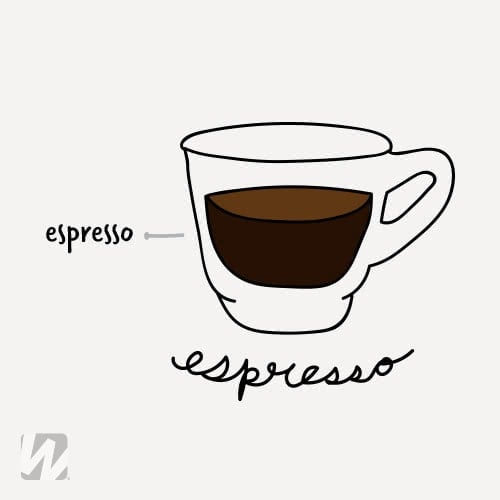
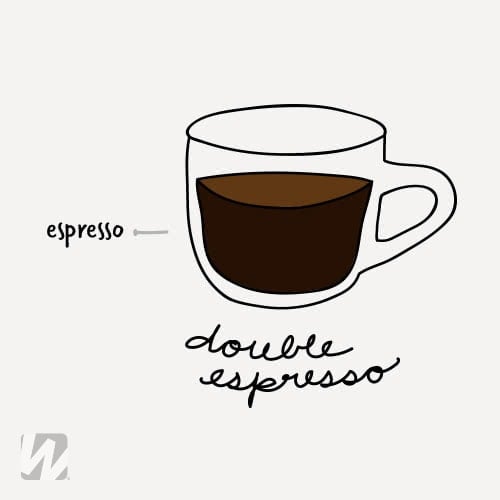

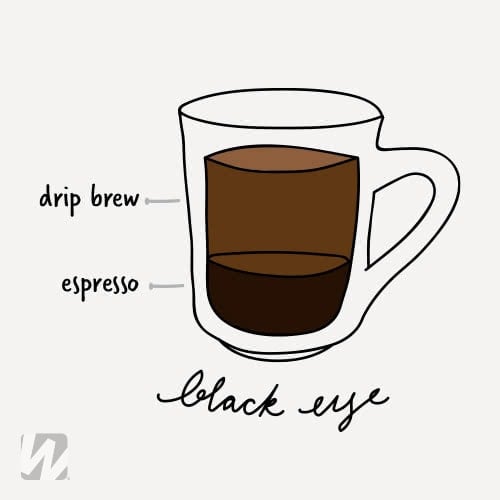

Americano
Americanos are popular breakfast drinks and thought to have originated during World War II. Soldiers would add water to their coffee to extend their rations farther. The water dilutes the espresso while still maintaining a high level of caffeine.
- Ratio: 1 shot of espresso + 3 oz. of hot water
- Cup: 5-6 oz. Glass Coffee Mug
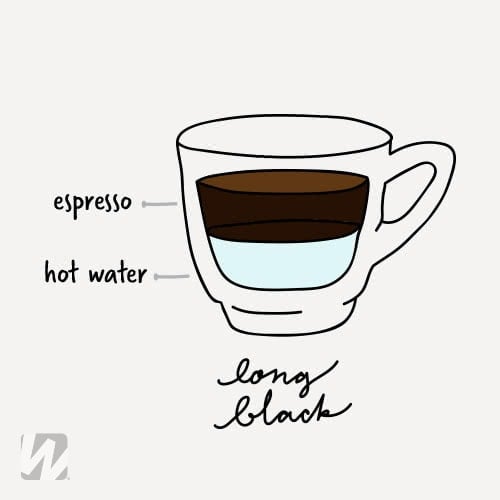

Macchiato
The word macchiato means mark or stain. This is in reference to the mark that steamed milk leaves on the surface of the espresso as it is dashed into the drink. Flavoring syrups are often added to the drink according to customer preference.
- Ratio: 1 shot of espresso + 1 to 2 teaspoons of steamed milk
- Cup: 3 oz. Glass Espresso Cup


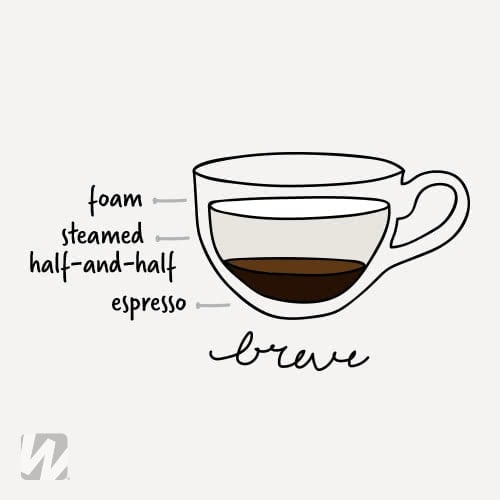
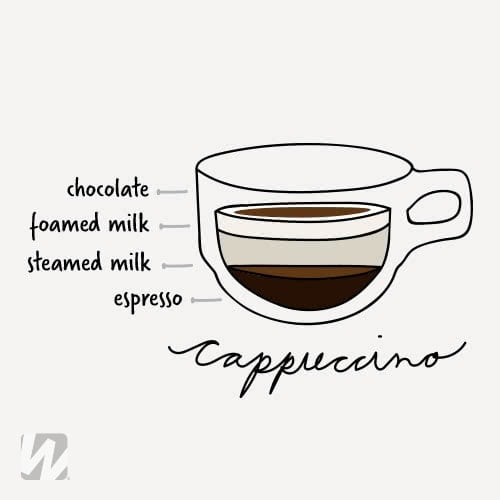
Cappuccino
This creamy coffee drink is usually consumed at breakfast time in Italy and is loved in the United States as well. It is usually associated with indulgence and comfort because of its thick foam layer and additional flavorings that can be added to it.
- Ratio: 1-2 shots of espresso + 2 oz. of steamed milk + 2 oz. of foamed milk + sprinkling of chocolate powder (optional)
- Cup: 6-8 oz. Cappuccino Mug
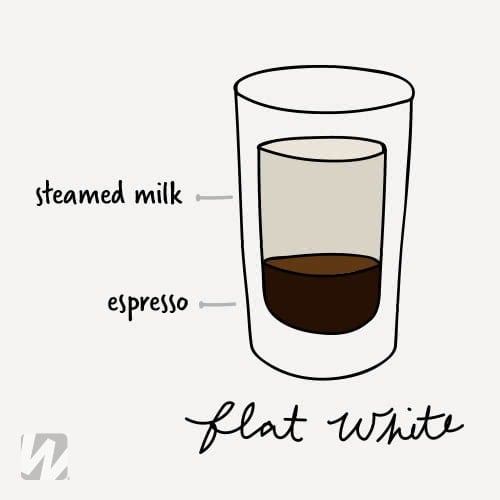
Flat White
A flat white also originates from New Zealand and Australia and is very similar to a cappuccino but lacks the foam layer and chocolate powder. To keep the drink creamy rather than frothy, steamed milk from the bottom of the jug is used instead of from the top.
- Ratio: 1 shot of espresso + 4 oz. of steamed milk
- Cup: 6 oz. Glass Tumbler
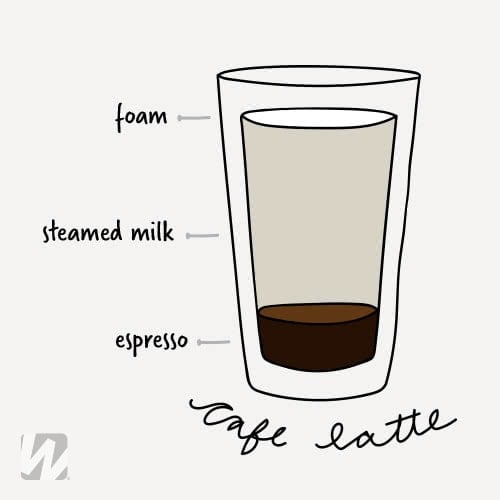
Cafe Latte
Cafe lattes are considered an introductory coffee drink since the acidity and bitterness of coffee are cut by the amount of milk in the beverage. Flavoring syrups are often added to the latte for those who enjoy sweeter drinks.
- Ratio: 1 shot of espresso + 8-10 oz. of steamed milk + 1 cm of foam
- Cup: 14 oz. Mixing Glass

Mocha
The mocha is considered a coffee and hot chocolate hybrid. The chocolate powder or syrup gives it a rich and creamy flavor and cuts the acidity of the espresso.
- Ratio: 1 shot of espresso + 1-2 oz. of chocolate syrup/powder + 1-3 oz. of steamed milk + 2-3 cm of foam or whipped cream
- Cup: 6-8 oz. Irish Coffee Mug
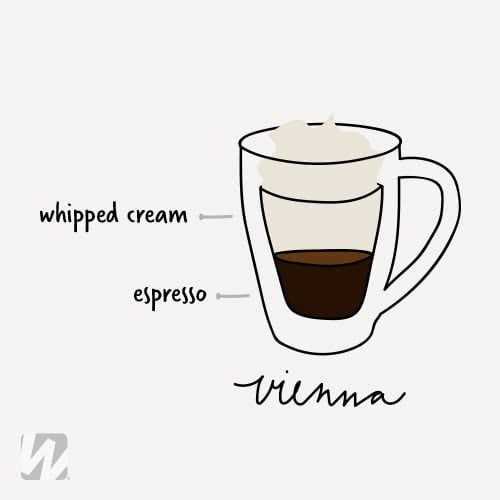

Affogato
Affogatos are more for a dessert coffee than a drink you would find at a cafe, but they can add a fun twist to your coffee menu. They are made by pouring a shot of espresso over a scoop of vanilla ice cream to create a sweet after-meal treat.
- Ratio: 1-2 shots of espresso + 1 scoop of vanilla ice cream
- Cup: 5-7 oz. Dessert Dish
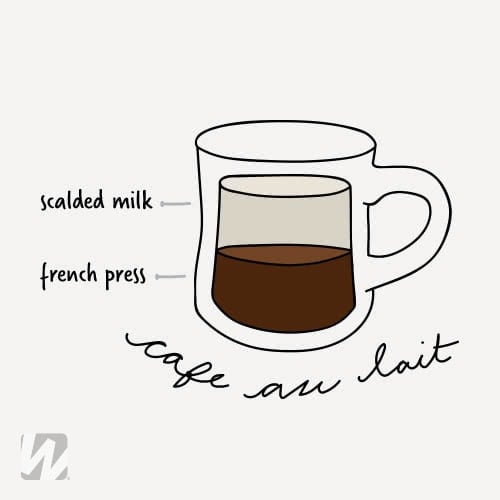
Cafe au Lait
The cafe au lait is typically made with French press coffee instead of an espresso shot to bring out the different flavors in the coffee. It is then paired with scalded milk instead of steamed milk and poured at a 50/50 ratio.
- Ratio: 5 oz. French press coffee + 5 oz. scalded milk
- Cup: 12 oz. Coffee Mug
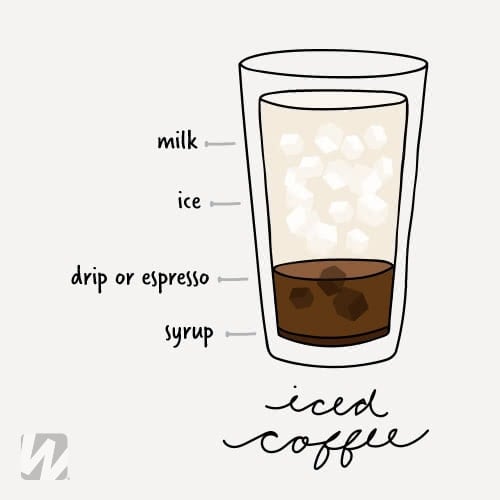
Iced Coffee
Iced coffees become very popular in the summertime in the United States. The recipes do have some variance, with some locations choosing to interchange milk with water in the recipe. Often, different flavoring syrups will be added per the preference of the customer.
- Ratio: 2 oz. drip coffee or espresso + 4 oz. of ice + 4-6 oz of milk or water + flavoring syrup to taste
- Cup: 14 oz. Mixing Glass
Being familiar with different types of coffee drinks can give you the confidence to try new drinks and open you palet up to new experiences.
Remember, to stop and smell the coffee.
cover photo by: Image by catalyststuff on Freepik
